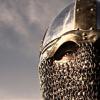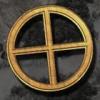Leaderboard
Popular Content
Showing content with the highest reputation on 2014-03-16 in all areas
-
The mill looks brilliant! You're a talent, a question of time when the art studios just take over our complete art team. :/ I love settlers, .. it was so cute we (my friends and mine) really dreamed of settlers at night once we were in our 5th school year ... If I only knew how to do it ... directly put a UV/ImageEditor, create NEW texture and go into texture paint mode? Eventually opening in GIMP via UV/ImageEditor -> External Tools? And you paint it all on one huge texture? Or is this just as it is baked at the end?2 points
-
2 points
-
Windows: Intel IA-64, x86. Linux: Intel IA-64, x86, ARM (mega-widespread, Open standard, almost every smartphone), Analog Devices, Alpha, C6X, ETRAX CRIS, Atmel AVR32, Hexagon, H8, M32R (Misubishi), Microblaze (Xilinx), MIPS, MN103, OpenRISC, Power, IBM, PowerPC, SPARC, SuperH , Synopsys DesignWare ARC cores, S+core, Tilera, Xtensa, UniCore32. If you don't to lose all your work in the near future. Go with an open system. Someday you might want to reuse your programs on your anti-gravity laser optical quatuum non-screen-required hologram device. Now look at the list above, take the decision to your liking. Fear of Windows 9 losing compatibility? XP support was dropped (now university legally is REQUIRED to trash all XP systems) On the other hand there is our Archlinux, a bleeding edge system. Belongs to noone other than this planet. No more updates, live update / incremental updates only (event the kernel). To not get shocked at the beginning better start with Ubuntu, it's just like a smartphone platform and simply works. There binaries for everything. No compilation required. Simply ask sudo apt-get install officeand it will ask if you meant LibreOffice. For editing DocX there is Docx4J upcoming. For TeX us TeXLive which integrates with LuaTex (use Lua for creating your documents) which will some day replace all TeX-specific commands. Okay, we've lost. Take Windows, because you have to use Windows for University anyway (as universities mostly have Windows installed, perhaps all those thousands of licenses are too cheap, noone really knows?). Use Linux in your freetime to feel morally fine, Earth's citizens have created it and will always help you out - even in future (programs from 30 years ago still supported without changes, e.g. perl, ..). If apt-get fails to install your program, don't worry, try again with: aptitude install blenderand it will resolve dependency issues if you say you don't like the default solution. It looks for more solutions until all is fine again. C# is a good choice indeed. So look for Visual Studio, get it, install it. Search for C# getting started. (it will probably even help with setting up C# environment) We are not angry if anyone does not like UNIX systems. Our principle is: no hierarchies, not even for Operating systems. it's everyone's freedom to choose. Just never stop asking questions and the reasoning behind decisions. That's all philosophers wish. Have fun.2 points
-
Thanks feneur, i will try to find the 7-zip program and upload maps. Today i only tested AI in maps wich are ok, and i changed the farmstead from gaia to player 1.2 points
-
1 point
-
The Council of Modders wishes to lend a hand in updating this mod to the newest 0 A.D. version if this is in conformance with Kimball's interests. Kimball, the Council's modders at Your Service. If you need help in any regards. My humble self will also lend you my bow if you have some ideas or a wishlist for RoTE. Also note the by Wildfire planned Mod manager that will make your mod maintaining and extension live easier..1 point
-
I think it's pretty cool to have some trees in a flooded region at some times. Sparked another idea for our ventures: floods and tsunamis, vulcanic eruptions and earth quakes. Not to forget the climates influence on the ground textures, so your green valley might become a desert over the centuries. Edit: Actually I think it's quite common for forests having glades? You two: rock on. This realism is amazing.1 point
-
the best form of a Japanese faction to include would be the Yamato dynasty, which would most definitely fall into Part2's timespan as opposed to Part1. for a bit of context, the Yamato are the Japanese who were represented in the original Age of Empires1 point
-
There's really no need for it, the closer the markets are --> the less money you get from them, so if someone puts two markets right next to each other they don't get much resources from them at all. That would just confuse people imho, better to always have all the units move. Itherwise you end up with your healers in one place and your other units in another. If you want to do something more specific you can always use control-groups or something to move the healers separately. This should be possible, at least in the development version there is a button at the bottom right that says "Main Menu" (I don't have the Alpha version installed), so if nothing else it will work in the next version.1 point
-
Yes, it's very interesting, and on the first page I soon as I read "chariot warrior" I was already thinking about the Meso-Americans depicting never seen Spanish horsemen as "centaurs". But the author won't meet my dream about a possible allegoric origin of the "giant" description for Goliath, and only explains how his armament is fully credible in the Near East context of the time (because the Philistines were not Sea People anymore). To exploit: Armor and weapon descriptions for charioteers and others.Philistine heavy chariot manned by *three* crews.1 point
-
1 point
-
the /Fishing Boat/ in https://www.transifex.com/projects/p/0ad/translate/#it/public/c/16927413 for brit_ship_fishing; celt_ship_fishing; gaul_ship_fishing could someone show to me the ship model? if it's a small, few people ship, it can be the proto-celtic "koruko" (/kəˈɾˠax/) source https://en.wiktionary.org/wiki/Index:Proto-Celtic/k as sander17 said, the "Curach" is used for the merchant ship. Curach/curagh/coracle were leather boats, from the proto-celtic koruko, usually a small fishing boat with a wooden frame, over which animal skins. Curachs were in the main used for fishing, and for the ferrying of goods and the transport of animals, including sheep and cattle between the Islands. History divulges the voyage of st. Brendan (the patron saint of sailors) who was born c. 484 in the south west of Ireland. This account tells the tale of an ocean going boat, with a thin sided and wooden ribbed vessel: as was the custom then, and covered it with hides which had been cured with oak bark. Tar was used to seal the places where the skins joined to avoid leakage. A mast was situated in the middle of the vessel. so i think the gaul/celt/brit fishing boats can be merged in the old koruko.1 point
-
1 point
-
When did you alt-tab? It most likely can happen at most times, but iirc the game is most vulnerable to alt-tabbing while loading a map. I generally use Alt-Enter instead as that seems less likely to crash in my experience.1 point
-
He's using Alpha 10 That ought to explain things I don't remember exactly when cheats were implemented, but I'm pretty sure it was later than that.1 point
-
@thamlett You don't need to install another distro. Puppy Linux in my opinion (this is just cuz I'm a slack guy ) will run on a 16 MHz 80386 lolz ... In other words, that's the only distro I know that runs optimally on notebooks. And the reason is because its extremely light, you'd have to manually configure that distro in order to support a variety of programs. In my opinion, don't use Mint or Ubuntu... Those Debian subs are immensely overrated and Ubuntu is sluggish and grossly unstable. You might as well be better off with Windows 8 lol....... You say that for some reason, you cannot get the game installed, the thing I want to know is what reason? Post the error messages, and screenshots if you want, I'll help you out1 point
-
Very interesting... I feel like we got a lot of answers today, but now there are more questions. Try tweaking the actor file to call out a .dae file instead of a .psa for the walk test. Could I see an animated gif of the walk? Maybe use: inf_pack_walk.dae <animation file="biped/inf_pack_walk.dae" name="Walk" speed="120"/> I have yet to see the .dae file that blender exports. I'd like to see it so I could do a comparison look. Could I get a copy from you? In wonder if the prop orientation error has more to do with how I brought the prop points into blender rather than an error on blender's part. I'm convinced this can be fixed. I'm more concerned about the mesh/animation cross talk between the old (max animations and meshes) with the theoretical new (blender meshes and animations).1 point
-
wherever you put it, it can either go alongside the sig or in the sig, wherever you guys want to put it1 point
-
It reminds me of one of our planned features that is not yet in our list. Thanks! (units will need resources, so the more units, the more difficult to feed, though the administrative and management idea sounds promising too - we have this for fields already where more units start hindering/decreasing gather rates)1 point
-
Interesting. The saddle reminds of those we use for camels sometimes ... I wonder why they tied it across the length of the horse and not like nowadays. Probably there were reasons ..1 point
-
I like that there is a lot of good responses. It makes me feel welcomed. Thanks you guys, does anyone have a particularly great tutorial source for writing code? Or am I on my own with that. I checked the web and there seems to be a lot of good ones. Thanks again.1 point
-
Also good news Stan, I got the FBX file to work. I'll take a look at it closer tonight. I need to spend the rest of my day doing not fun stuff... my taxes1 point
-
Well you could try replacing an existing skeleton, for instance, m_tunic_short and see what that does1 point
-
The SpiderMonkey upgrade is ready for review. Check the comments on trac and get it from my github repository if you want to help testing and reviewing.1 point
-
I'm not sure if I understand the question. What happens is that by default max is set up to work with inches. You can change the parameter to meters, but that's kind of annoying since you have to rescale all your files that way. So exporting to inches, and when you open it in Blender make sure it scale it right and you're done, nothing really problematic here unless you don't know it. I guess it has to do with the SMD format, in valve games I don't think they use some kind of prop support since it is mostly FPS games. Okay I need to explain a bit further here. In max I use the Worm Wall plugin to export in SMD. You have three options : - VTA (Don't know that format, and blender can't import it) - Reference SMD (Guess that's for non-rigged models) - Sequence SMD (For Animations). What happens during importations in Blender (Using the Ox cart as reference); - Using Reference SMD : - As you see Scale went wrong. Everything is one object, and there is no animation stored. - Using Sequence SMD - Animation only with armature.1 point
-
There where some additional bugs: - My HeightPlacer() didn't work properly (I used [x, y] instead of [x][y] and if no constraint was given it failed) - You gave an actor to the painter but it only takes "terrains" and you don't want to add the actor to every tile (so I changed that) - The LayeredPainter() needs the "width" argument being an array of the length of the terrain array argument -1 (the center doesn't count. See: http://trac.wildfiregames.com/wiki/Rmgen_Library#Areapainters for an example) - The RandomTerrain() class argument has to be a string of a terrain and optionally, separated with a "|", an entity from 0ad/binaries/data/mods/public/simulation/templates and a subdirectory (like "medit_sand_wet|gaia/flora_tree_dead" so without the ".xml"). You cannot use actors (from 0ad/binaries/data/mods/public/art) or templates (0ad/binaries/data/mods/public/simulation/templates without a subdirectory). [This as a great inconvenience and one of the reasons why I try to avoid using the RandomTerrain() class and that includes painters etc.. Additionally doing simple things like adding a patch of terrain easily depends on 10 other functions/classes so it gets horrible to debug.] - Additionally you used the UPPER height limit of the lowest level as the LOWER height limit for the painter (same for the upper height limit). I changed this accordingly. Here's the map as far as possible working with your approach (Since actors cannot be used I placed trees representative but you should avoid placing trees in water. The unit AI can't handle them.): schwarzwald-fex_v1.zip Additionally you should flatten the terrain where you place the paths (should be the SmoothElevationPainter()).1 point
-
Very interesting read from the Cornell University website. Reconsidering_Goliath.pdf1 point
-
Thnaks .You're right, there is improvement to be done (for some reason, it looks good on paper, but the scanned image looks crappy!). I'll post some more concepts soon.1 point
-
PLZ don't limit anything (I'm already annoyed with limited towers/fortresses). Balance things instead, please. (even a population cap would become unneeded if we had some kind of "upkeep" system e.g. gather rate decreases with population/number of buildings to simulate payment and administration costs)1 point
-
The only thing I need to know is how to bias the realistic terrain generator to create a valley. Furthermore do I want to know how you made sure that the levels are playable. I noticed BTW that a lot of other RM-scripts use a heightbased texture painting too without looking very tiled. I'll try and see if it works for me. You can influence the general shape of the map by giving a rough initial heightmap (e.g. 3x3) like: initialReliefmap = [ [heightRange.max, (heightRange.max + heightRange.min) / 2, heightRange.max], [heightRange.max, heightRange.min, heightRange.max], [heightRange.max, (heightRange.max + heightRange.min) / 2, heightRange.max]];and then give it to getBaseTerrainDiamondSquare like: var myReliefmap = getBaseTerrainDiamondSquare(g_Map.size + 1, heightRange.min, heightRange.max, 0.5, initialReliefmap);You will have to apply the reliefmap to the g_Map if you finished manipulating it: setReliefmap(myReliefmap);So if you use the realistic terrain demo just add the initialReliefmap code (search for initialReliefmap to see where. the other preset initial heightmaps are documented out and will form islands). It then will look similar to this (tiny, 2 players, seed 1): (The diagonal appearance comes from the start locations being added that way, not from the initialReliefmap. The right and left side medium height "valleys" however do.) The getBaseTerrainDiamondSquare function doubles the size until it's bigger then the needed size and then cuts the bottom left part of the needed size. That will change in the future so the center is used rather then the bottom left. So until now on some map sizes the lake will not be in the center of the map. Additionally keep in mind that the shape is most suitable for 2 players. You might want to make the initialReliefmap depend on the number of players here because it's not radial symmetric. Also you should change on which height the start locations are added and add more tree covered "height levels" (textueByHeight array). Hope I could help. (Could someone PLZ make the post editor stop adding/removing spaces tabs and newlines insanely?)1 point
-
1 point
-
It's possibly have the building system from AoM. If you try to drop a building over other structure the system try to snap it more close that can it's possibly , that make more easily place building near others.1 point
-
DEYLAMITES, people inhabiting a shifting region in northern Persia and adjacent territories, including the Deylamān uplands. i. IN THE PRE-ISLAMIC PERIOD In antiquity the Deylamites (Gk. Dolomîtai and variants) were mountain tribes, usually identified by 10th-century Arab geographers with the inhabitants of Deylam, the highlands of Gīlān. A considerably broader distribution extending as far as southern Armenia and the Caucasus can be deduced, however (Minorsky, p. 193). The earliest mention of the Deylamites occurs in Polybius’ universal history, of the late 2nd century B.C.E. (5.44.9), in which, in the description of Media, Greek *Delymaîoi is to be read in place of geographically impossible Elymaîoi (i.e., Susiana), as the tribes named immediate after them (Anariákai, Kadoúsioi, Matíanoi) were all in the north. It is also possible that the “Elymaioi” mentioned by Plutarch (Pompey 36.2; 1st century B.C.E.) with the Medes were actually Deylamites. In the later 2nd century C.E. Ptolemy (6.2) listed *Delymaís as a place in northern Choromithrene, which was located southeast of Ray and west of the Tapuroi (i.e., Ṭabarestān). There, too, the toponym was corrupted to Elymaís (Markwart, Ērānšahr, p. 126 n. 1). In the Pahlavi Kār-nāmag (tr., p. 47) it is recorded that in the final years of the crumbling Parthian empire Artabanus V (or IV) mobilized all the troops from Ray,Damāvand, Deylamān, and Patešḵᵛārgar, evidence that the region south of theAlborz was inhabited by Deylamites. More precisely in the Nāma-ye Tansar (tr., p. 30) it is stated that Deylamān, Gīlān, and Rūyān (later part of Ṭabarestān) all belonged to the kingdom of Gošnasp of Ṭabarestān and Parešvār, the latter apparently the Alborz region. Gošnasp made his submission to Ardašīr I (224-70) only after thorough consideration and kept his realm by the guarantee of Ardašīr himself. The dynasty was still ruling there in the time of Pērōz I (459-84; cf. Masʿūdī, Tanbīh, p. 99-100). Kavād I (488-531) appointed his eldest son, Qābūs (Kāōs), king of Ṭabarestān (Nāma-ye Tansar, tr., p. 70; Ebn Esfandīār, tr. Browne, pp. 92-94). Toward the end of his reign (while the Roman emperor Justin I [d. 527] was still alive), Kavād dispatched Būya (Gk. Bóēs), “bearing the title wahriz” (Gk.ouarízēs), against King Gurgēn of Iberia (Procopius, De Bello Persico 1.12.10). That Būya had come from Deylam can be deduced from a tradition according to which the wahriz (i.e., Ḵorrazāḏ b. Narsē b. Jāmāsp) who conquered Yemen during the reign of Ḵosrow I (531-79), in about 570, had formerly been governor of Deylam (Masʿūdī, Tanbīh, p. 260; Ḥamza, p. 138). The troops of the wahriz also included Deylamites (Nöldeke, Geschichte der Perser, p. 167). Procopius (De Bello Gothico4.14.5-7, 4.14.9) reported, from a western point of view, on the Dolomîtai at the siege of Archeopolis in the disputed territory of Lazica during the reign of Ḵosrow I (about 552): They were independent allies of the Persians, living in inaccessible mountains in the heart of Persia (i.e., Media) and fighting as infantrymen, each armed with sword, shield, and three javelins and accustomed to warfare on mountainous terrain. Some time later, according to Agathias (3.17.6-9, 3.17.18-22), the Dilimnîtai, “the largest tribe of those dwelling on this side of the river Tigris in the region of Persis” (i.e., in central Persia, or Media), undertook a fruitless attack against the Hunnic Sabirs, who were in the service of the Romans, and vainly charged the fortress of Phasis in Colchis. Agathias characterized them as very warlike and independent allies of the Persians, skillful warriors in close combat or at a distance, using sword, pike, and sling. In a fragment from Theophanes (preserved in Photius, Bibliotheca 64) it is related that in the battles between Persians and Romans during the reign of Justin II (565-78), which broke out in 572, the Deylamites (Gk. tò Dilmainòn éthnos) joined forces with the Persians and the Sabirs. When power passed from Ohrmazd IV (579-90), to whom the Deylamites had submitted, to Ḵosrow II in 590 a certain Zoarab, leader of the Deylamites, rose up against the latter and joined the party of Bahrām VI Čōbīn (590-91; Theophylact Simocatta, 4.4.17, 4.3.1). When Bahrām Čōbīn’s rising failed the Deylamites joined the rebellion of Besṭām (see BESṬAMÚ O BENDOY), a maternal uncle of Ḵosrow II (probably 592-95; cf. Nöldeke, Geschichte der Perser, p. 486). After the fall of Besṭām the šahr-wahriz (i.e., governor of Deylam) fought against the remnants of his army, consisting of Deylamites and Armenians, in alliance with Smbat Bagratuni, marzbān (margrave) of Gorgān (Sebeos, tr., pp. 43-46). Incidentally it was reported (Balāḏorī, Fotūhá, p. 282) that Ḵosrow II had a personal guard of 4,000 Deylamites. When the Arabs conquered Persia the Deylamites remained virtually unsubdued, ruled by their own dynasty until the 9th century (cf. Minorsky, p. 190; Markwart, Ērānšahr, p. 127; see ii, below). Christianity entered Deylam fairly early; in 554 there was a diocese of Āmol and Gīlān (Chabot, pp. 109, 366). The religion obviously survived for a long time in these iunaccessible regions: The Nestorian patriarch Timothy I (780-823) elevated both Gīlān and Deylam to the status of metropolis (Thomas of Marga, I, pp. 252-53; II, pp. 467-68), though evidence from a letter of the patriarch suggests this separate status was limited to the years 795-98 (cf. Braun). These arrangements were, in fact, not stable; in about 893 Elias, metropolitan of Damascus, mentioned only Media (=Ray) as a metropolis, and the lists compiled by Ebn aḷ-Ṭayyeb (d. 1043) and ʿAbdīšōʿ, metropolitan of Nisibis (d. 1318), are silent about them (Sachau, pp. 21 ff.). The metropolis of Deylam does, however, reappear in the lists given by the early 14th-century historians of the Nestorian patriarchs, ʿAmr b. Maṭṭā and slightly earlier Salibhā b. Yūḥannā (Maris Amri et Slibae, pp. 126, 132). It seems that remnants of Christianity must have survived up to that time. ii. IN THE ISLAMIC PERIOD In the early Islamic centuries the Deylamites lived in the Alborz mountains and along the shore of the Caspian north of Qazvīn, between Gīlān in the west and Ṭabarestān (Māzandarān) in the east. Whatever their actual origins, at that time they and their Gilite neighbors were commonly considered closely related and frequently mentioned together. It was claimed that the two peoples were descended from two brothers, Deylam and Gīl, of the Arab tribe Banū Ḍabba; this legend of the Arab origins of the Deylamites seems to have been known already at the time of the early expansion of Islam (see Ṭabarī, I, pp. 1992, 2352; III, p. 2367). Deylamites were certainly known among Arabs from the time of the Persian conquest of Yemen in about 570, and during the early days of Islam the Deylamites Fīrūz and Gošnasp (Jošnas) played a leading role among the Persian Abnāʾ, backing the new religion in Yemen. Fīrūz Deylamī’s family emigrated to Palestine and Syria, where several of his descendants became well-known Muslim traditionists. Dey-lamites may also have participated in raids in northern Arabia. Abū Dolaf b. Mohalhel (sec. 25; Yāqūt, Boldān, s.v. Deylamestān) mentioned a place called Deylamestān, located 7 farsangs from Šahrazūr, where in pre-Islamic times Deylamites used to camp while they carried out their raids into the lowlands of Mesopotamia. Whatever the original language of the Deylamites may have been, in the Islamic period they spoke a northwestern Iranian dialect very similar to the language of the Gilites. Apart from other characteristics of northwestern Iranian, the guttural pronunciation of h as ḵ, noted as Gilite by Maqdesī (Moqaddasī, p. 368; e.g., both Ḵošam and Hawsam, Ḵašūya and Hašūya), and an ī sound added between consonants and ā (Lāhījān=Līāhījān, Došmanzār=Došmanzīār, Amīrkā=Amīrkīā, presumably pronounced Lyāhījān, Došmanzyār, and Amīrkyā respectively) were probably characteristic of Deylamite, as well as of Gilite. The question whether or not the report by Eṣṭaḵrī (p. 205) about a tribe in the Deylamite highlands that spoke a language different from Deylamite and Gilite and a similar report by Abū Esḥāq Ṣābī about a tribe in the region of Rašt (Madelung, 1987, pp. 14-15) attest the survival of a non-Iranian language among them must be left open. In the first Islamic centuries. During the early centuries of Islam the Deylamites successfully resisted frequent Arab efforts to conquer their land. Some Deylamite mercenaries seem, however, to have joined the Arabs even before the battle of Qādesīya (16/637) and afterward accepted Islam (Ṭabarī, I, pp. 2340-41). Sayf b. ʿOmar reported a battle at Vājrūḏ in the year 18/639 in which the Arabs under Noʿaym b. Moqarren defeated the Deylamites and killed their leader Mūtā (Ṭabarī, I, pp. 2650-53). Qazvīn surrendered to Barāʾ b. ʿĀzeb, governor of Ray, in 24/645 and continued to function as a fortified border town against the Deylamites, as it had in the Sasanian period. Its garrison converted to Islam, and a group settled in Kūfa, where it was known as the Ḥamrāʾ of Deylam, presumably because its members were largely of Deylamite extraction. In Hadiths ascribed to the Prophet Moḥammad Qazvīn was praised as a border fortress, its martyrs equal in merit to the martyrs of the battle of Badr (Ebn al-Faqīh, p. 283). The Deylamites were commonly described, together with the Turks, as the most barbarous and odious enemies of the Muslims (Ṭabarī, II, pp. 285, 320, 722, 748, 1391), against whom religious war (jehād) was most meritorious.1 point
-
1 point
-
That link was to an older version that didn't work with one of the new alphas. Try this link instead: http://www.moddb.com/mods/rote/downloads/infantry-release-demo Although to be perfectly honest, I'm not sure whether those files are sufficiently up to date either.1 point
-
Hey guys, Admittedly, this is the first time I've logged into this forum in months, and I wasn't even aware that the project had its own subforum until a few minutes ago. It's very cool to see how much interest there still is in the development of this faction, and we've always been appreciative of WFG's ability to restrain themselves from getting frustrated and just creating their own Chinese faction. As of today, I'm accepting applications from anyone who is willing to participate in development. Send me an email using the mail link in my signature with a brief description of what you're able to contribute and what your availability will be like in the next couple of months. Artists, sound designers, programmers, writers and historians are all welcome, or perhaps you have an idea for a position I didn't even know we needed. Whatever the case may be, we need to build a group of people who are dedicated to turning this project into a reality, and we need you to make it happen.1 point
-
. I agree with others that there never really were "sea walls" but rather walls built upon jetties or along the shore. I think we should allow walls to be built into shallows so that we can properly close off a beach to enemy units. Right now, it is impossible to build walls out far enough to do this. Walls need slightly looser build restrictions compared to "normal" buildings, IIRC the problem is a technical one: how to specify this in terms of (pathfinder) passability classes. If there's not a ticket for it, I will make one.1 point






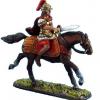
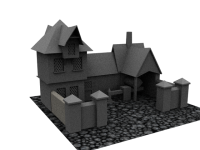

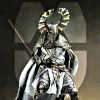

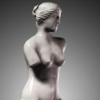
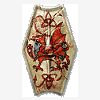
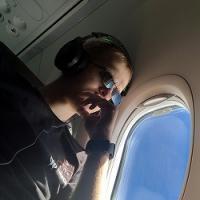

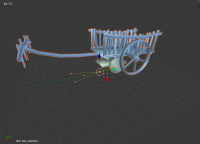
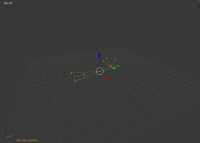
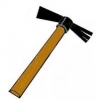
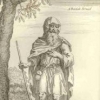
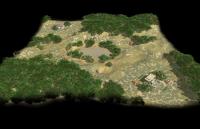
.thumb.png.ce58cea22940c255f5b0a735d5abee36.png)
